Graptemys pseudogeographica
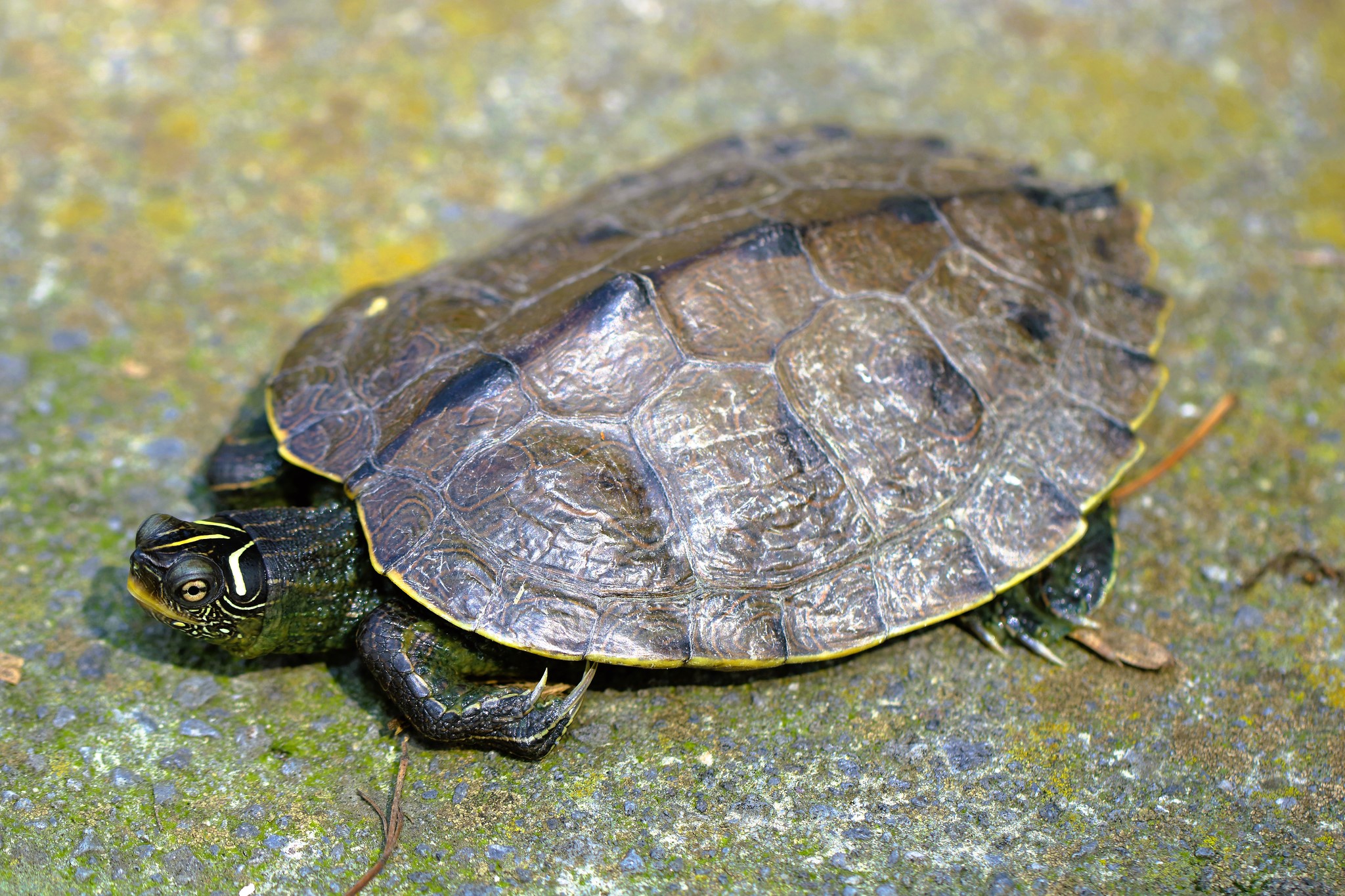

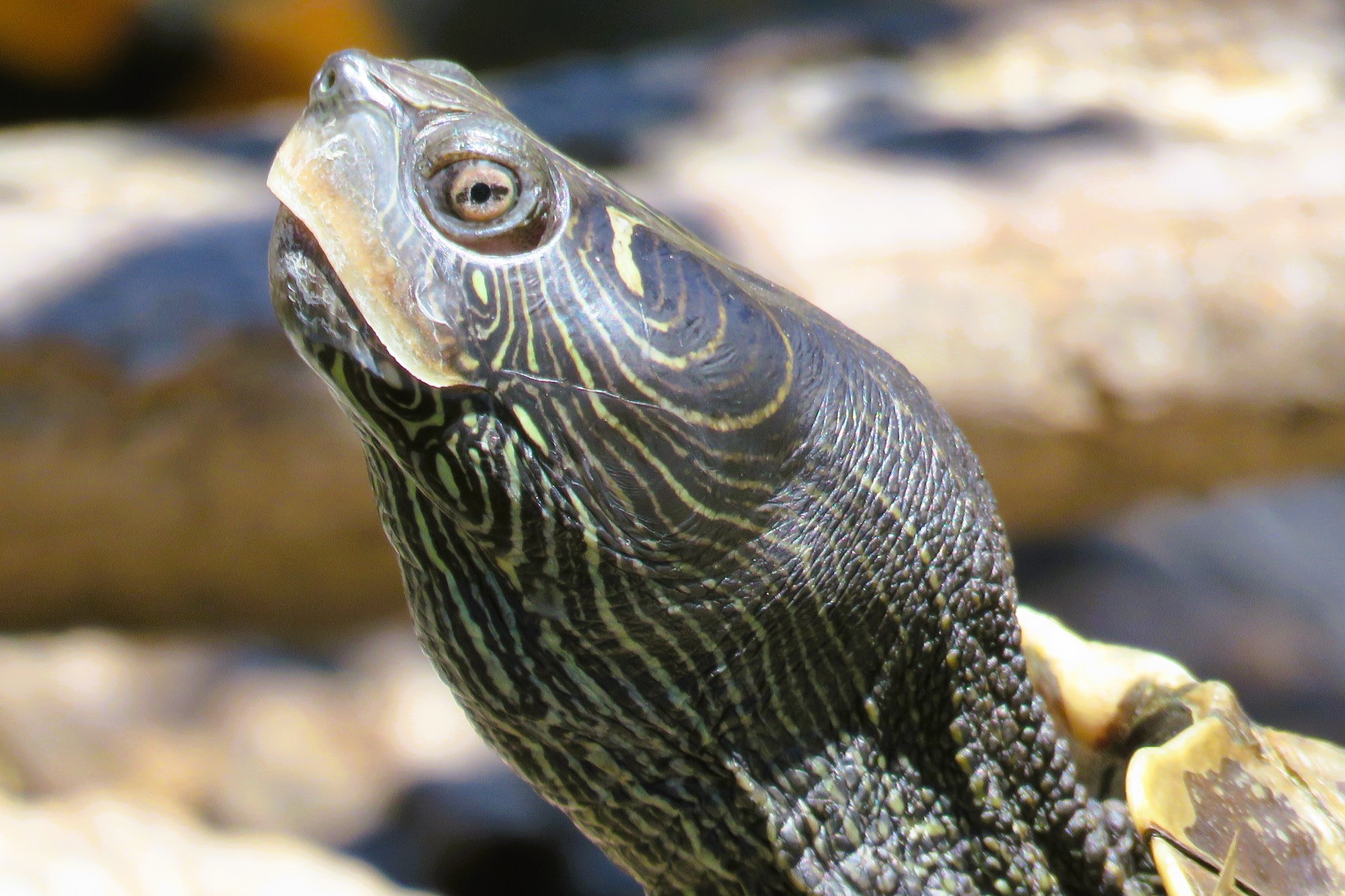
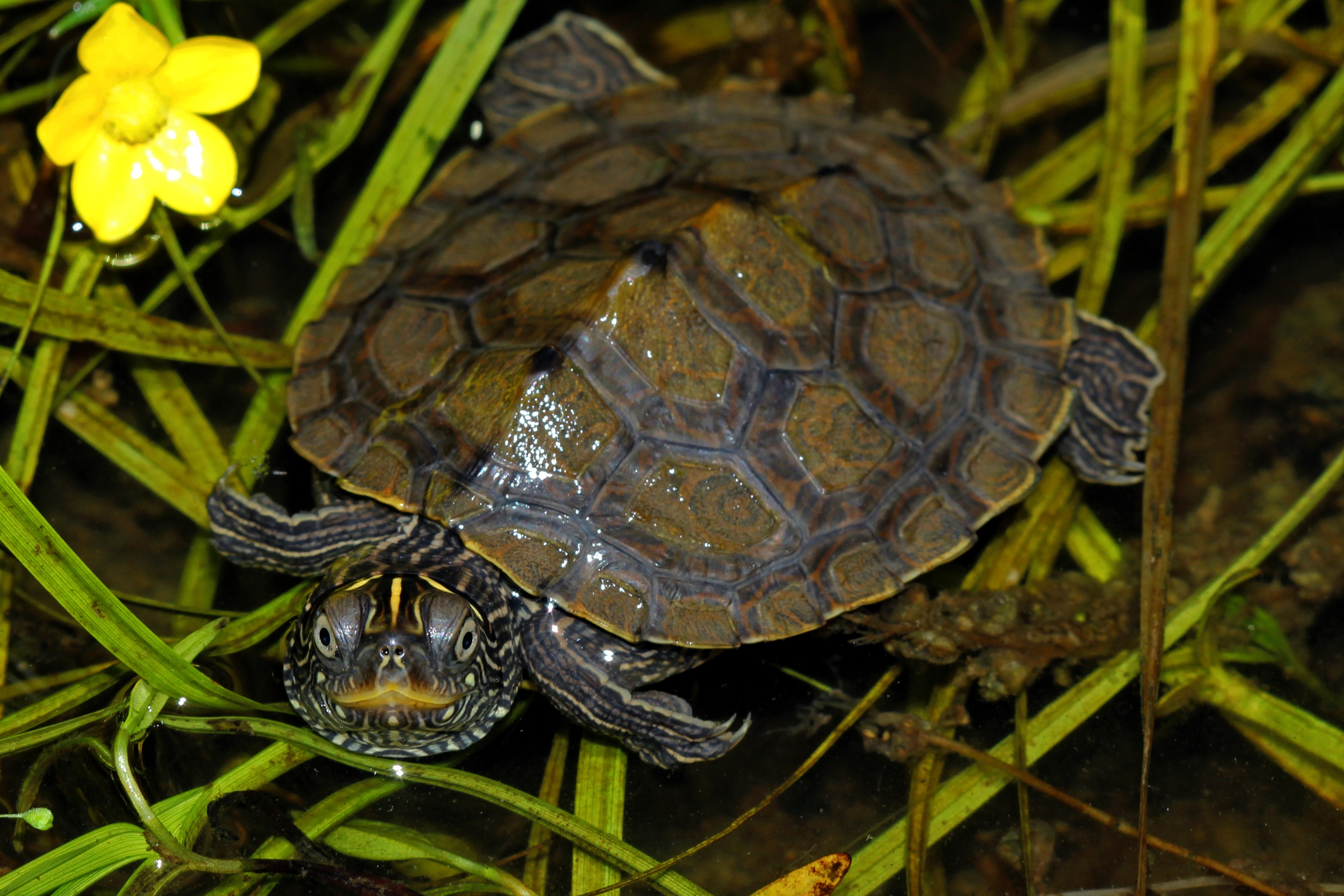
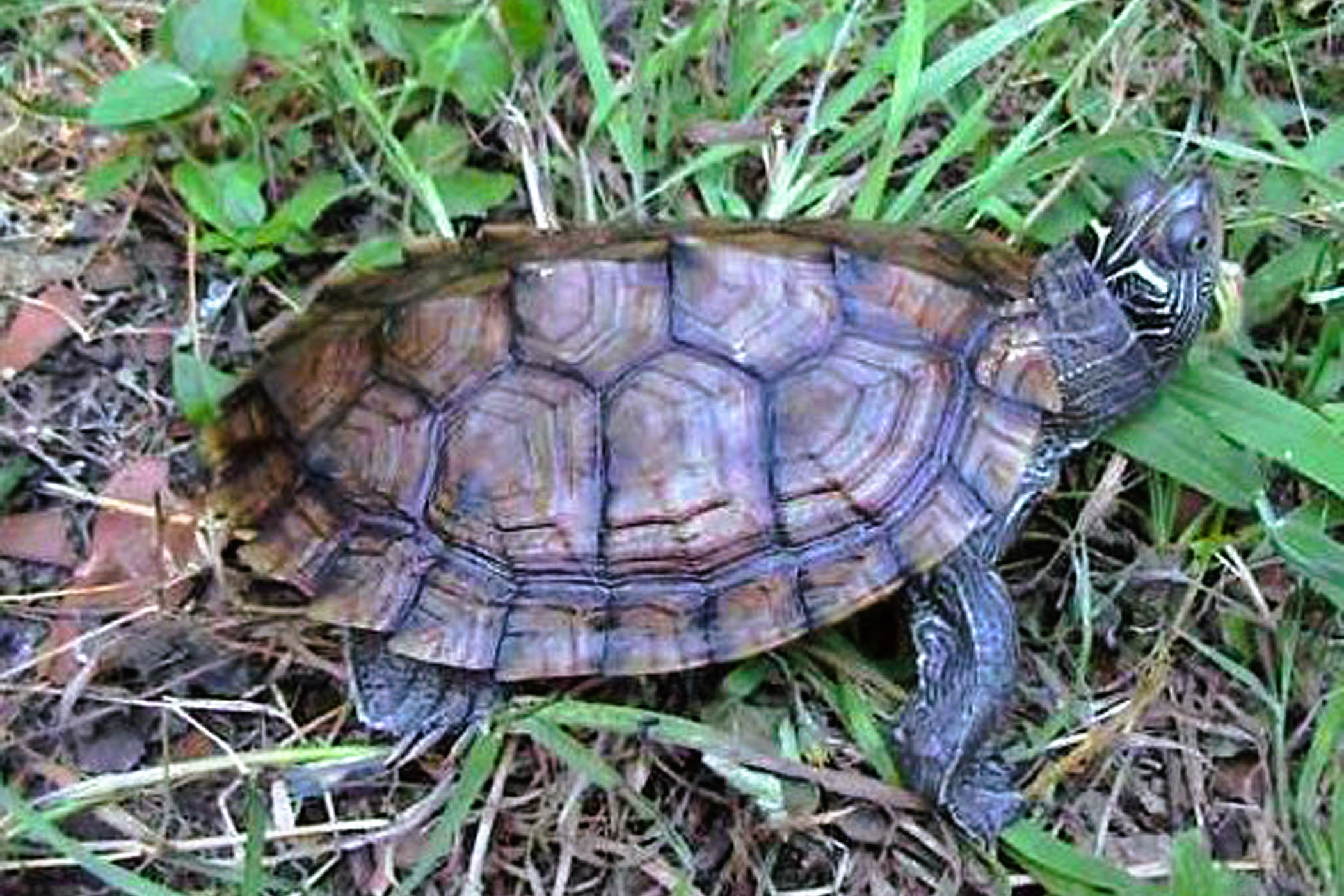
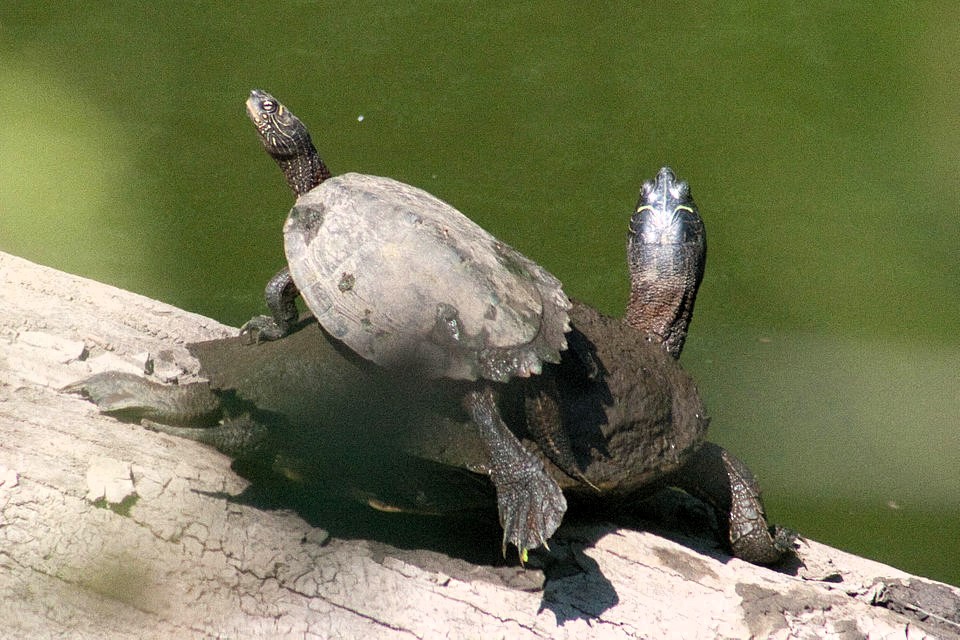
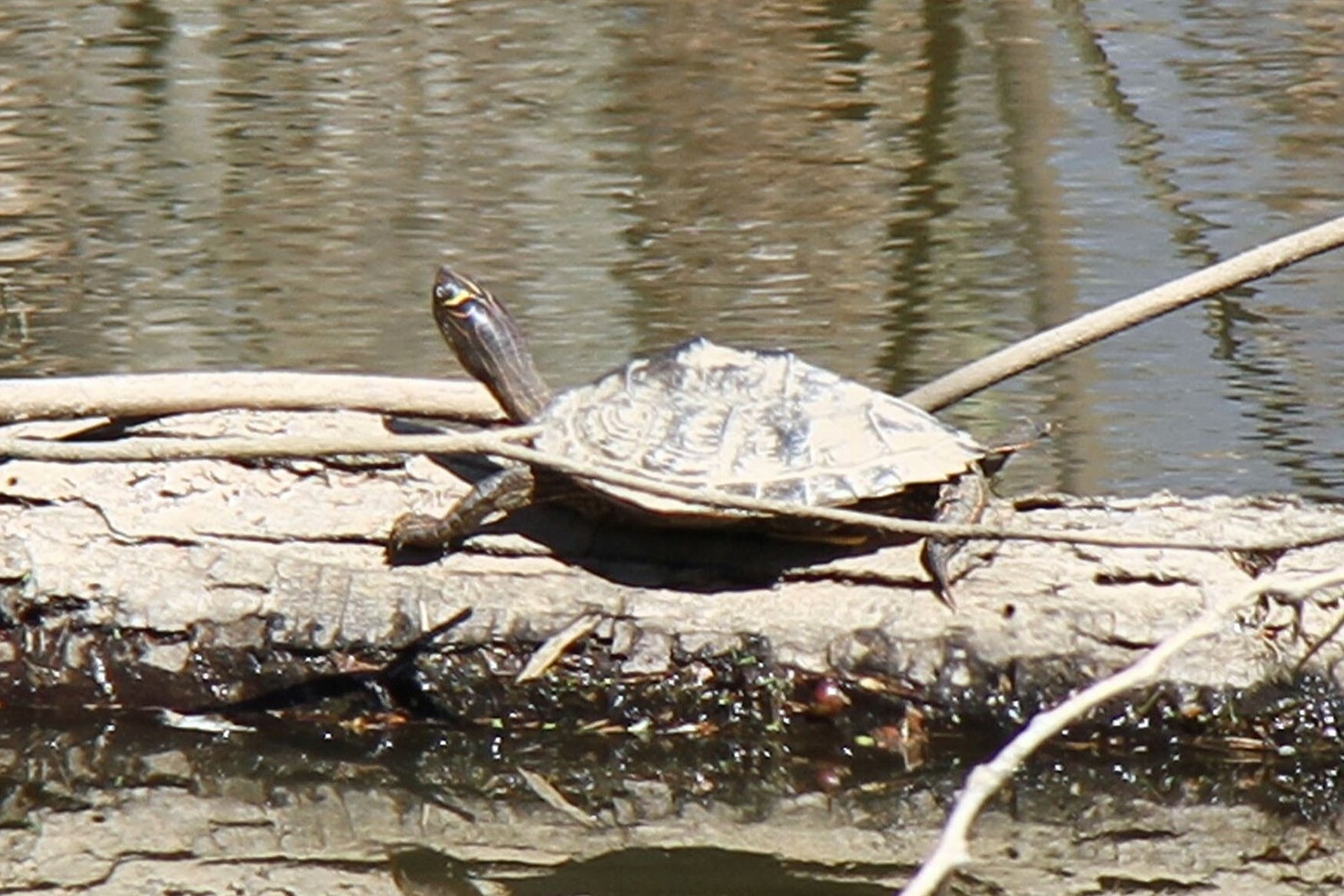
Reptilia → Testudines → Emydidae → Graptemys → Graptemys pseudogeographica
Testügin da carta
The False Map Turtle ( Graptemys pseudogeographica ) is a North American freshwater turtle introduced to Italy, recognizable by the pronounced reticulated pattern on its carapace reminiscent of map lines, from which its common name derives.
It demonstrates marked sexual dimorphism: females reach a carapace length of 6–10 in (15–25 cm), while males remain smaller, between 3.5 and 5.5 in (9–14 cm). Females have a large head, higher carapace, and robust build; males are distinguished by a long, thick tail and elongated claws on the forelimbs.
Specimens display an olive-colored carapace with a dense light network of lines and a particularly pronounced dorsal keel, which is most evident in juveniles. A distinctive yellow “L”-shaped mark behind each eye is characteristic, accompanied by numerous yellow streaks that radiate from the head and along the limbs, contributing to a markedly striking appearance.
In western Liguria, the False Map Turtle ( Graptemys pseudogeographica ) is present solely as a non-native species, introduced accidentally or following voluntary releases of unwanted pets.
Sightings are concentrated in coastal wetlands, major watercourses, and artificial basins, where it tends to settle in a fragmented, localized manner. Its presence is directly linked to the phenomenon of exotic releases, often resulting from abandonment after regulatory restrictions or as the animals grow.
It prefers large aquatic environments such as slow-flowing rivers, lakes, deep ponds, and canals with abundant aquatic vegetation.
Sun-exposed basking sites, such as logs, exposed stones, or sandy banks, are essential for the species, providing places for thermoregulation and environmental surveillance. It periodically uses the banks for egg laying but spends most of its life in water.
The False Map Turtle ( Graptemys pseudogeographica ) is predominantly diurnal and strictly aquatic, leaving the water only for basking and nesting.
During the warmest hours, it may gather in large groups on sunlit surfaces. Reproduction occurs in spring and summer; females lay up to 6–13 eggs per nest, with the possibility of multiple clutches per year. Incubation completes in 60–75 days depending on ambient temperature.
Diet varies significantly over the life cycle:
Juvenile False Map Turtles ( Graptemys pseudogeographica ) are mainly carnivorous, preying primarily on aquatic insects, small mollusks, and other invertebrates.
Adults adopt an omnivorous diet, consuming mollusks, crustaceans, fish, plant material, fruits, and organic debris. This dietary flexibility aids the species' success in colonized environments.
The introduction of the False Map Turtle ( Graptemys pseudogeographica ) into non-native ecosystems represents a significant threat to native fauna:
It is listed among invasive species of Union concern: import, sale, and possession have been prohibited in the European Union since 2012.
The False Map Turtle ( Graptemys pseudogeographica ) has a great capacity to adapt both to thermal fluctuations and different water regimes and anthropization of habitats.
Abandoned individuals contribute to the formation of potentially expanding reproductive groups: for this reason, particular care is recommended to avoid releases or relocations.
In western Liguria, species management involves targeted monitoring, removal of individuals, prevention of spread, awareness campaigns, and public involvement for prompt reporting of specimens and new colonization events.
Impacts on native communities may include a decrease in local species, alteration of ecosystem functioning, and loss of biodiversity, especially in already ecologically fragile sites.